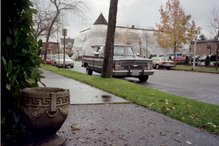The Holocaust Conference at PLU in 2002 was attended by about 30 Holocaust scholars and the intellectual energy of their youth had a lot of dynamism. According to the News Tribune article the it was a 4-day event with a focus on early anti-Semitic teachings of European churches – it was nine years ago, I filed the article and managed to retrieve it last year for the 2010 Conference.
According to my notes from 2002, the history of the question of Semitism in Europe was considered in depth. Part of Catholic anti-semitism challenged Jews to translate Talmud passages of love for one another which existed like flowers - only a few in a neglected garden. The inference was that Jews were treated with contempt because they showed contempt for others. This was the idea of anti-goyism - the Jewish hatred of non-Jews, that Jews were hostiel against the Christian nation.
Some cricisms of protestant anti-Semitism entered focused on the belief that Jews were condemned because they did not choose Christ over Barrabas.
There is contrast to the present Holocaust Conference style, in 2010 and in 2011 the emphasis has been on the tragedies of genocide in today's world, Ruwanda, and on of teachers of youth, there to learn more about extending knowledge about these serious topics in the early years of school. Carl Wilkins presented, along with students from
One direct history paper presentation on Saturday was about the Kindertransport – it reflected both traditional history and the teaching interest of the conference.
Back in 2002, during one busy question and answer session I stood and asked about a theme - the rescue of 7,500 Danish Jews taken to
I wondered by who and when it was determined that someone looked Jewish. The exact strategy of placing people on the boats was so unclear to me.
In 2005 a novel about the Holocaust helped me understand this part of history better. The author's name was Kevin Haworth, The Discontinuity of Small Things, about
Most of the Saturday events were devoted to art and the holocaust. Poetry After Auschitz was a respectful meditation on the use of words after such a terrible idea.
Friday rain poured down, Saturday the sun was so pleasant.


No comments:
Post a Comment